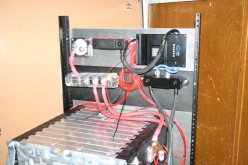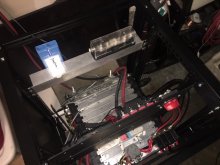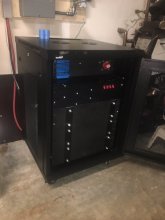On the JK 200 amp smart BMS, the P- and B- leads are each a pair of #7 AWG wires that are pre soldered to the board inside. The case is a cast aluminum enclosure with the high current wires coming out each side. On the battery side, I shortened them to about 5 or 6 inches and they connect to a buss bar where the cables come from my battery bank. My battery bank feed to that buss bar is a pair of #2 AWG cables. On the output side of the BMS, I shortened the leads again, to about 5 inches, and spliced them to a 2/0 cable for another 8 inches or so where it connects to my battery bank output buss bar. My measurement was between the 2 buss bars. I think I have a picture showing this.
View attachment 34691
This was before it was all finalized and installed in the cabinet. So my voltage drop measurement was taken between the 2 black buss bars. So it included the drop of the pair of blue wires, and then the 2 thin black wires and the 2/0 extension to the second buss bar. The splice is a heavy wall copper sleeve crimped around the 3 wires for a full inch. I did not try to measure at the board. It seems a bit sketchy to power up the board without the case on it, especially since the cast aluminum case is the FET heat sink. The wires are well fanned out onto the PC board, which has a copper metal plate also soldered over the current carrying trace. The buss bar on the left has marine style fuses for the 2 strings of batteries, and mounted on the cabinet, is a Class T fuse for the entire bank after the shut off switch.






